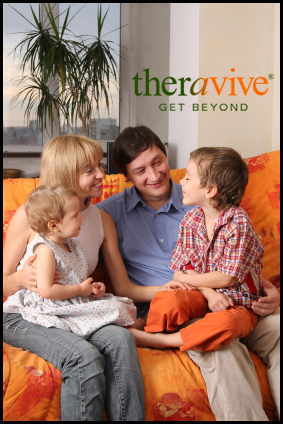 When people think of discipline and children, the two things that instantly come to mind are spanking and timeouts. But the reality is that discipline can be much more than just these two options. There is a whole spectrum of ways to change the behavior of a child without only using punishment as a means to mold it.
When people think of discipline and children, the two things that instantly come to mind are spanking and timeouts. But the reality is that discipline can be much more than just these two options. There is a whole spectrum of ways to change the behavior of a child without only using punishment as a means to mold it.
There is a widely held view that positive discipline is equal to “soft” parenting (Spencer, 2001). Positive discipline is actually a method of changing the behavior of a child through the use of reinforcement. It’s not a system of rewards, or a method in which there are only positive consequences. Rather it’s a theory of behavioral change in which all of the reasons behind behaviors are taken into account and molded in order to make the most of the parent child interaction. There are negative consequences associated with the positive discipline approach. But just as life has positive and negative consequences, the theory of positive discipline entails the use of positive and negative consequences.
Uncovering the Reasons for Behavior
In order to really understand how to foster the behaviors that we would like children to exhibit, we have to understand the reasons behind behaviors. Recognizing the patterns of behavior is the core behind positive discipline (Anderson, 2004). The reason that we do things, or don’t do things is because we are driven by emotional and physical needs. In order to change behavior, we alter the way that we are addressing the needs.
It often seems as though children are driving the interaction, particularly when they act out. But behavior is a two sided coin. It’s actually driven equally by the parent and the child. Human relationships are always about a balance of interactions, and parents who find that they have hit a wall with their child’s behavior will only find ways to change that behavior if they make adjustments in their own.
Operant Conditioning and Positive Discipline
Positive discipline is driven by the understanding that there is also negative discipline. Operant conditioning is the theory behind the development of positive discipline, and positive discipline is based on the notion that we can different reinforcers or punishments alter behavior in different ways (Staddon & Cerutti, 2003). Positive discipline then uses these understandings of reinforcement in order to help parents change the ways that their children interact.
The chart below shows the hierarchy of behavior changes under operant conditioning.

So you can see that there are different ways of changing behavior. If we want to create more of a behavior, then we can add good things or take away bad things. If we want to make less of a behavior, we can add bad things or take away good things.
The table below shows some ways that parents can use operant conditioning in creating consequences for their children. Notice how there are multiple ways to drive the desired behavior. Each individual child responds differently, as they are a unique individual (Myers-Walls, 2004). In order to facilitate the desired behaviors, parents can change the forces that they’re using with their child.
|
Desired behavior
|
Positive Reinforcement
|
Negative Reinforcement
|
Positive Punishment
|
Negative Punishment
|
|
A-B Honor Roll
|
Have a friend over to spend the night
|
No chores for a week
|
Complete extra assignments in the areas that were low
|
No friends over for a month
|
|
Clear their plate at dinner
|
Double Dessert
|
None of their least favorite food tomorrow at dinner
|
Clear the table
|
No Dessert
|
|
Clean their room
|
Play a game with parent
|
Parents will do some of the cleaning next time
|
Weed the garden
|
Take away toys
|
When parents want to change the way that their household runs, they need to look more to the left side of the chart - the reinforcement side of changing behavior. Often people think that fostering behavior in this way leads to spoiled kids, but on the contrary it instead teaches important life skills and creates lasting good behavior. This doesn’t mean that the right side of the chart, the punishment side, is never used in positive discipline. The idea is that there needs to be a balanced discipline approach, and that every family can maximize their outcomes by creating their own unique harmony between positive and negative behavior consequences (Myers-Walls, 2004).
Don’t forget that what we really want is for children to learn to self motivate and do these tasks themselves. The idea is that we want to reward positive things with positive outcomes, but also remember that satisfaction is derived from the action of completing a task as well as from any rewards or punishments.
The Criteria for Positive Discipline
There are 5 criteria for positive discipline (Taylor, 2014). These are the core of this method of changing the behavior of a child and are all essential to the process.
Positive discipline . . .
-
creates a sense of belonging, connection and significance.
-
is mutually respectful and encouraging - it is both kind and firm.
-
is effective in the long term by considering the thoughts, feelings, learning and decision making of the child.
-
instills social and life skills such as respect, cooperation, problem solving and concern for others.
-
empowers children by teaching them to use their power in constructive ways.
 When you read through these, you can see that working with positive discipline means getting to the heart of a child’s understanding of themselves and the world around them. The idea is to create self motivation in the child so that they desire to behave in positive ways comes from within themselves, rather than through some outside influence.
When you read through these, you can see that working with positive discipline means getting to the heart of a child’s understanding of themselves and the world around them. The idea is to create self motivation in the child so that they desire to behave in positive ways comes from within themselves, rather than through some outside influence.
Raising children is not about creating rules and restrictions. While these can be motivation for a short time while the child is in the home, what really resonates with a child are the connections and sense of belonging that’s created in their emotional self (Anderson, 2004). That environment of love and support gives children the confidence to move forward in positive ways in their lives. Don’t we all want to feel like we belong? Each child is an individual who has a lot to offer the world. Positive discipline techniques focus on creating value and a sense of significance for children.
Positive discipline is respectful and encouraging to children, and fosters those same senses within each child. While we don’t seek to focus on the boundaries, it is important that the are firm. Don’t think of it as drawing a line in the sand, but rather as creating a home with sturdy walls. Our homes are so cozy and instill feelings of protectedness within us precisely because they have walls. The walls that a parent creates should foster the same sense of safety and comfort, while still being structurally sound (Anderson, 2004).
Long term effectiveness is one of the hallmarks of the positive discipline approach. By considering the thoughts, feelings, learning and decision making of the child, we’re creating a sense of purpose in good behavior. Years from now, when the child is out on their own and living away from home, the way that we help them to understand the boundaries of life will be the largest contributing factor in their success or failure. Whether or not we help them to learn to follow the rules as a toddler will affect whether or not they get to work on time and therefore how much money they make as an adult.
Life skills are truly what we’re getting to when we talk about discipline and behavior management. It’s not about whether children put their shoes away, or share their toys. At the heart parents must understand that it’s really about problem solving, respect for others, and the ability to cooperate effectively. These skills are transferable, meaning that they don’t just stand to be helpful in one single situation, but across life.
Empowerment is absolutely the name of the game in positive discipline. People seek to find power, and they are either going to find it over others or within themselves. Parents need to foster a sense of power that derives from inner strength and control. This leads to children who grow up with a strong sense of self esteem and an understanding not only that they should follow the rules, but that following the rules will lead them to find power and success (Devall, 2004).
Implementing Positive Discipline
Parents must change their expectations for what their children are capable of in order to effectively change the outcomes that they see in their children. Creating an environment of positive discipline allows parents to make the most of their relationship with their children and to foster development that will lead to healthy adults.
More than anything, implementing positive discipline is a matter of shifting thinking patterns in a parent from a desire to control to a desire to shape behavior.
________________________________________________________________________________________________
Anderson, C. L. (2004). Positive parenting: Supporting optimal development. Journal of Family and Consumer Sciences, 96(4), 1.
Devall, E. L. (2004). Positive parenting for high-risk families. Journal of Family and Consumer Sciences, 96(4), 22-28.
Myers-Walls, J. (2004). Positive parenting: Key concepts and resources. Journal of Family and Consumer Sciences, 96(4), 10-13.
Spencer, P. (2001) Positive parenting. Baby Talk, 66, 32-38.
Staddon, J. E. R., & Cerutti, D. T. (2003). Operant conditioning. Annual Review of Psychology, 54, 115-44.
Taylor, J. (2014) What is Positive Discipline? Retrieved from http://www.positivediscipline.com/what-is-positive-discipline.html. Accessed on August 12, 2014.
About the Author

Autumn Robinson, MA, PhD Candidate
Autumn Robinson is a writer and PhD candidate who lives in the beautiful Blue Ridge Mountains of North Carolina with her husband, three young boys and daughter with special needs. She is a former special education teacher who believes that all people deserve to be treated with dignity and respect. Autumn is the Digital Manager for Vestidd, an innovative cloud based program that helps families with special needs to organize and manage their often complex responsibilities.